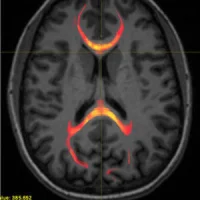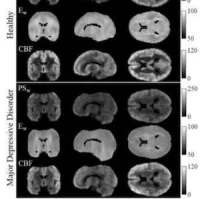The blood-brain barrier (BBB) is a network of blood vessels and tissues that protects the brain from foreign substances. BBB poses a challenge to scientists working on new treatments because it also blocks potentially therapeutic drugs from reaching targets inside the brain.
You might also like: PET Imaging Tool Measures Synaptic Loss in Alzheimer's Disease
Researchers in the U.S. have found a way round this problem, which could open new avenues for the treatment of Alzheimer's disease, according to a new study presented at the annual meeting of the Radiological Society of North America (RSNA).
In this study, researchers used low-intensity focused ultrasound (LIFU) to open the blood-brain barrier for targeted drug delivery. LIFU was delivered with MRI guidance to specific sites in the brain critical to memory in three women, ages 61, 72 and 73. These subjects had early-stage Alzheimer's and evidence of amyloid plaques, or abnormal clumps of protein in the brain that are linked with this illness.
Study patients, who received three successive treatments at two-week intervals, were monitored for bleeding, infection and oedema (fluid buildup). Post-treatment brain MRI confirmed that BBB opened within the target areas immediately after treatment, with no adverse effects Also, closure of the barrier was observed at each target within 24 hours.
MRI-guided LIFU involves placement of a helmet over the patient's head after they are positioned in the MRI scanner. The helmet has more than 1,000 separate ultrasound transducers angled in different orientations. Each transducer delivers sound waves targeted to a specific area of the brain. Patients also receive an injection of contrast agent made up of microscopic bubbles. Once ultrasound is applied to the target area, the bubbles oscillate, or change size and shape.
"The helmet transducer delivers focal energy to specified locations in the brain," study co-author Rashi Mehta, MD, associate professor at West Virginia University (WVU) explains. "Oscillation of the microbubbles causes mechanical effects on the capillaries in the target area, resulting in a transient loosening of the blood-brain barrier."
While LIFU can deliver therapeutic drugs into the brain to improve their effectiveness, even without drugs, opening of the brain-blood barrier in animals has shown positive effects, Dr Mehta notes. These effects may be due to increased flow of the fluid that cleans the brain of toxic substances, from an immune response triggered by the opening, or by some combination of the two.
With the results showing LIFU's safety, the next step for the researchers is to study LIFU's therapeutic effects.
"We'd like to
treat more patients and study the long-term effects to see if there are
improvements in memory and symptoms associated with Alzheimer's disease,"
says Dr Mehta. "As safety is further clarified, the next step would be to
use this approach to help deliver clinical drugs."
Source:
Radiological Society of North America
Image credit: Radiological Society of North America










